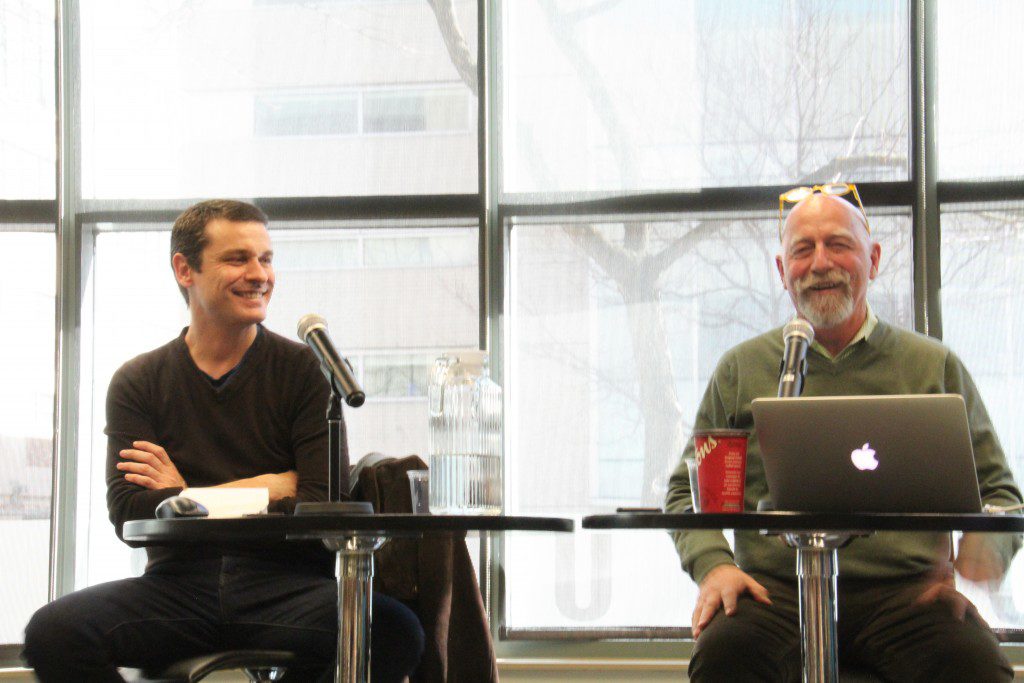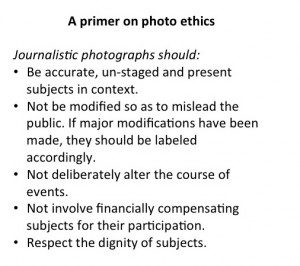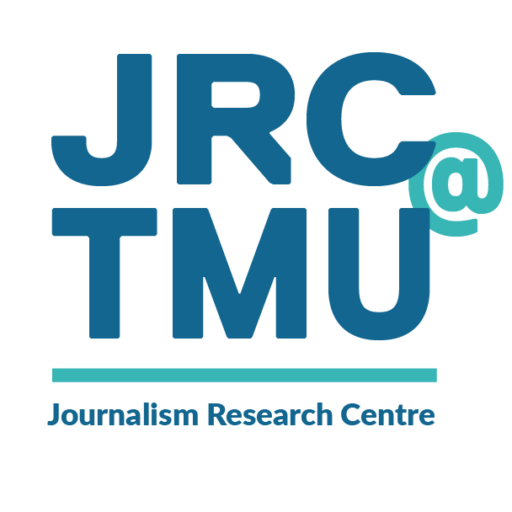By STEPH WECHSLER
Special to the RJRC

Digital photography and the capacity to edit pictures quickly and affordably have reopened debate over what editorializing means in images and the nature of photojournalistic neutrality, says award-winning photographer Peter Bregg.
New technologies have expanded the options for manipulating photographs, Bregg said during a panel discussion organized by the Ryerson Journalism Research Centre: “If a photo is heavily enhanced in post production is it the truth as it happened, or is the photographer trying to influence the reader?”
Bregg, winner of the 2014 Canadian Journalism Foundation’s lifetime achievement award and an instructor at Ryerson’s School of Journalism, was joined on the panel by Thierry Gervais, the head of research at the Ryerson Image Centre and curator of Dispatch: War Photographs in Print, 1854-2008. The pair discussed the evolution of war photography, photojournalism trends, neutrality and how the meaning of images can change depending on the audience and where they are displayed.
“If you’re taking a picture where half the picture [is] in sunlight and the other half [is] in shadow, in the days of film, it wasn’t worth printing usually,” Bregg said. “But with RAW [the uncompressed image file from the sensor in a digital camera or scanner], you can go in there and lighten the shadows so it looks proper. You can darken the highlights in the sunshine so it looks okay.”
The ability to alter images has led to new rules governing what can and cannot be changed, he noted. In the World Press Photo contest, for example, “entrants are not permitted to make changes in colour that result in significant changes in hue to the extent that the processed colours diverge from the original colours,” he said. The rules, however, have not put an end to debates about photo manipulation.
Major controversy, for instance, surrounded Swedish photographer Paul Hansen’s 2013 World Press Photo prize for “Gaza Burial.” Hansen’s image, which depicts a procession of grieving uncles carrying their dead nephews through an alleyway after the children were killed in an Israeli airstrike, came under fire for what critics said appeared to be excessive tonal manipulation in post-production.
The World Press Photo Award’s winners were announced. first Prize went to Paul Hansen, for his photo ‘Gaza Burial’. pic.twitter.com/B2Dih4ls
— ATHOS (@athosmagazine) February 17, 2013
Forensic experts who studied the photo found that there were, “no additions– pixel for pixel– or subtractions,” Bregg said, noting that Hansen was allowed to keep his prize. “They did find there was a fair amount of post production, meaning the guy went into Photoshop. He changed the colours a bit to make it more dramatic. Made the shadows darker.”
The rules listed on the World Press Photo website say that adjusting colour is considered acceptable so long as it doesn’t excessively divert from the original image. Minor cropping or removing spots from negatives is also permitted, but staging scenes is completely prohibited. While some of these rules are fairly straightforward, others, as Bregg and Gervais suggested, are highly subjective. The World Press Photo’s 2015 entry rules page, for instance, says that “the content of an image must not be altered. Only retouching that conforms to currently accepted standards in the industry is allowed. The jury is the ultimate arbiter of these standards.”
Bregg argued that while “the standards really haven’t changed, the technology has changed dramatically.” He noted that there is a long history of manipulating news images: “People have been doing this for years in that you went into the darkroom, and if the background didn’t suit you, you could make it darker” by exposing an area of a print for longer.
Alternatively, the practice of dodging – what Bregg said photographers once called “the hand of God,” – is an old darkroom technique that involves waving an object, like a hand, between the enlarger lamp and the paper to limit the exposure, effectively lightening the image.
Gervais pointed to even earlier examples of photo manipulation. Engravings, he noted, were used to reproduce photographs in newspapers in the 19th century, and to make what were considered improvements at the time. Early photographs had a very narrow depth of field so the background was often blurry, but wood engravings could be etched with a higher degree of background detail compared to the original photographs.
Since the wood carvings conveyed details the photographic image could not, the engravings were considered a more complete depiction of the truth, Gervais said.
Editorial discretion, he added, is exercised in every aspect of journalism: “We are always talking about photography as a mechanical process and because of that, [we assume it is] more truthful, it’s more credible. And, okay, we can say that, but of course when you write, you emphasize something and not something else. I think that’s exactly what photographers are doing in this time.”
Gervais said meaning can also be changed depending on the camera used and where and how the photograph is displayed. As an example, he pointed to “Taliban” by French photographer Luc Delahaye. Delahaye’s 2001 image of a dead Taliban fighter was produced in two ways – with a common digital single-lens reflex (SLR) camera, and a panoramic camera. The former resulted in a regular-sized image that was published in the press, while the wider-format image from the latter was hung on the walls of a gallery.
The panoramic image, he noted, tells a story the press photos could not. In it, you can see footprints around the body and that the dead man’s shoes are missing. “He’s been robbed,” said Gervais. “That’s war. That’s what they do. They kill people, take their money, take their boots and leave.
“When you look at [the] photo that has been published taken with the SLR, all of that is gone,” he said. “I saw a kind of paradox. For me, you have a big image in which you can see a lot of detail because everything was super-sharp for the art gallery, and you have a cropped image losing a lot of information in the press. What can we say about that?
“I would have thought that the more information you put the better it is in the press,” he said.
Gervais and Bregg also discussed what makes an image “good.”
To Gervais, “an image is made of lines, it’s made of tones, it’s made of colours.” But most people can’t articulate why they like or dislike an image – it’s the intangible combination of visual elements, style and subject matter that make an image a success or a failure, he said.
Bregg said that instinct factors into the sense that a photograph works. He noted that submissions to the World Press Photo contest have soared in recent years so that these days a picture has to be “different” to get a judge’s attention. And while black and white was once the photographic standard, now it’s considered novel and arty: “What’s old is new and what’s new is old,” he observed.
The panelists agreed that while there have been momentous changes in equipment, access and taste, the core principle of photojournalism – the need to accurately convey what happened – hasn’t changed.
“The technology has changed but the ethics haven’t,” said Bregg. “We’re still supposed to work with the same ethics we did 100 years ago.”

